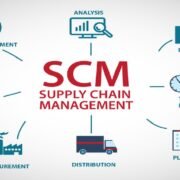Five Consumer Behaviour theories for your MBA dissertation
Five Consumer Behaviour theories for your MBA dissertation
Here are the Five Consumer Behaviour theories for your MBA dissertation. Students are spending their end term dissertation, internship dissertation to parse the thoughts, patterns, and behaviors of consumers. Understanding the theories of Consumer Behaviour for their target audience, they can probe deeper into that audience’s wants and needs to reflect in the MBA dissertation. Over the years, many academicians have invented theories to try and streamline what they believe explains these behaviors.
1. Theory of Reasoned Action
Martin Fishbein and Icek Ajzen originally conceived the theory of reasoned action: a consumer behavior theory that focuses on the relationship between marketing and the preexisting attitudes consumers bring to their purchasing decisions.
According to the theory of reasoned action, consumers act on behaviors that they believe will create or receive a particular outcome, familiar or otherwise. As such, rational decision-making is the chief element of what drives consumers to make purchases.
This consumer behavior concept leans on the significance of specificity over obtuseness. In other words, a consumer may only take a specific action when given a reason to believe there’ll be a specific desired result. From the time the consumer decides to move forward with a decision to the moment the action is finished, the consumer can change their mind or select a different course of action.
This has led marketers to several insights, the first being how they must associate a purchase with a specific positive result. For example, AXE markets its body spray products in such a way that all who use them might believe they have improved desirability with women. The theory then emphasizes the importance of moving consumers through the sales pipeline, rather than keeping them idle, where they might have an opportunity to talk themselves out of a purchase or decide to spend their money on a competing brand.
2. Engel Kollat Blackwell Model
The Engel Kollat Blackwell (EKB) Model is a natural evolution of the ideas found in the theory of reasoned action. This theory of buyer behavior operates on a four-phase process that influences how consumers make purchasing decisions: input, processing information, decision stages, and variables in the decision-making process.
Input is the first phase, which is simply the stage when consumers take in the most marketing materials either through billboards, online advertisements, or in-person displays. Through the data collected in these materials, they graduate to information processing, during which they combine that input with experience and expectations to make the best decision for their current circumstances. Rational insight leads them to the next step, which is where they actually make a purchasing decision based on the information they collected.
The decision process also has five phases: recognition of need, information searching, evaluating alternatives, purchasing (or choosing), and post-purchase outcomes.
During the initial information stage of the EKB model of consumer behavior theory, input is the most valuable. Consumers receive enough information about the product or service to easily recall or turn to the company’s products for future needs, and again during the external influence phase. One industry that has a good grasp of this sequence is the lifestyle industry, where brands know exactly how to market their products to trigger a desire in the consumer, usually so they look, smell, or feel better than they would if they used competing brands.
3. Motivation-Need Theory
In 1943, the broader psychological community felt the impact of Abraham Maslow’s hierarchy of needs: a theory that insists that individuals act to satisfy and fulfill their needs based on a system of five priorities of increasing importance — physiological survival, safety, love, esteem, and self-actualization.
Maslow’s theory was used across business and marketing classes to explain why consumer-tailored marketing messages were critical to sales success. By appealing to consumers in a way that relates to their level of need, marketing campaigns could prioritize purchases that instill significance and urgency.
Marketers with a strong understanding of motivation-need consumer behavior theory can effectively craft campaigns and advertisements around an artificial need that they control within the consumer. A common modern example comes in the form of luxury carmakers that emphasize the safety and security features within their vehicles over the aesthetic, convincing consumers that spending their money on an expensive luxury car is acceptable because it fulfills the need to provide physiological safety for oneself and family.
4. Hawkins Stern Impulse Buying
In contrast to the focus on rational action found in most other theories of consumer behavior, Hawkins Stern put its focus on impulse behavior. It’s Stern’s argument that the impulse to purchase was only one-half of average consumer behavior, fitting neatly beside tendencies toward more rational purchasing decisions. These impulse decisions are influenced mostly by external stimuli like walking past a convincing advertisement and possess very little relationship to traditional decision-making habits.
Impulse buying exists on four levels of the Stern philosophy. The first level is the quick, pure impulse purchase, like making a last-minute purchase on the way out of a grocery or hardware store. The second level is known as the “reminded” impulse purchase, which makes associations between one product and another. For example, placing chips and salsa in the same aisle, so if you’re planning to buy one, you’re reminded you may want the other.
The third level is the suggested impulse purchase, such as tacking on a warranty offer as you purchase electronics or power tools. The fourth level is the planned impulse decision, which is deliberate in that consumers know they want to buy a type of product, but just aren’t sure of the specifics.
Marketers have spent years trying to master the power of impulse purchases. From the art of packaging to the arrangement of a product on store shelves, everything has an impact on the target audience’s impulse control.
5. Theory of Buyer Behavior
The core concept present in the theory of buyer behavior is that purchasing behavior is, generally speaking, reliably repetitive and prone to establishing a familiar purchasing routine to save time and simplify the decision-making process. In answer to this, the theory seeks to identify the elements of that decision process and note any changes that occur, and whether those things grew out of a commercial and social environment that any given brand could influence.
According to this consumer behavior theory, a buyer’s preferred choice of brand is informed by motives; alternative choices, or courses of action; and any decision mediators that match the motives with those alternatives, such as whether the buyer thinks coffee is better in the morning or the evening. Through understanding these mediators, the alternative brands on the market, and the brands the consumer is aware of, there’s room to find a gap and make something that fills that gap.
In addition, there’s an opportunity when a new buyer is in the market to purchase a new type of product (product class), but lacks experience or knowledge of the product needed. The information the buyer seeks or accidentally receives from a third party is processed through the lens of what’s needed and how well that product might fulfill that need.
It may also be compared to previous types of products and use a similar process in making the new decision. For example, according to the theory of buyer behavior, a buyer may generalize the experience of purchasing a refrigerator and use that experience to inform the purchase of a new dishwasher.
Regardless of the source, the one making the purchase develops the decision mediators needed to reliably choose that brand in the future based on what seems to have the best potential for satisfying the purchaser’s motives.
Therefore, the above five consumer behaviour theories for your MBA dissertation, is useful for writing consumer behaviour dissertations in your marketing course. If you are seeking directions in BBA marketing dissertation topics, MBA marketing dissertations topics, applying these Five Consumer Behaviour theories for your MBA dissertation will help you to score more. Get top dissertation writing tips from dissertationshelp4u.com, and the question of how to score high in dissertation will be fulfilled for you.
EMAIL- dissertationshelp4u@gmail.com
website- www.dissertationshelp4u.com
Call/whatsapp/Telegram- +91.9830529298
#dissertation #dissertationwriting #MBAdissertation @eduhelpcentral #endterm #endtermdissertation #academicwriting #consumerbehaviour #theories #BBA #MBA #buydissertation #dissertationwritinghelp
















Leave a Reply
Want to join the discussion?Feel free to contribute!